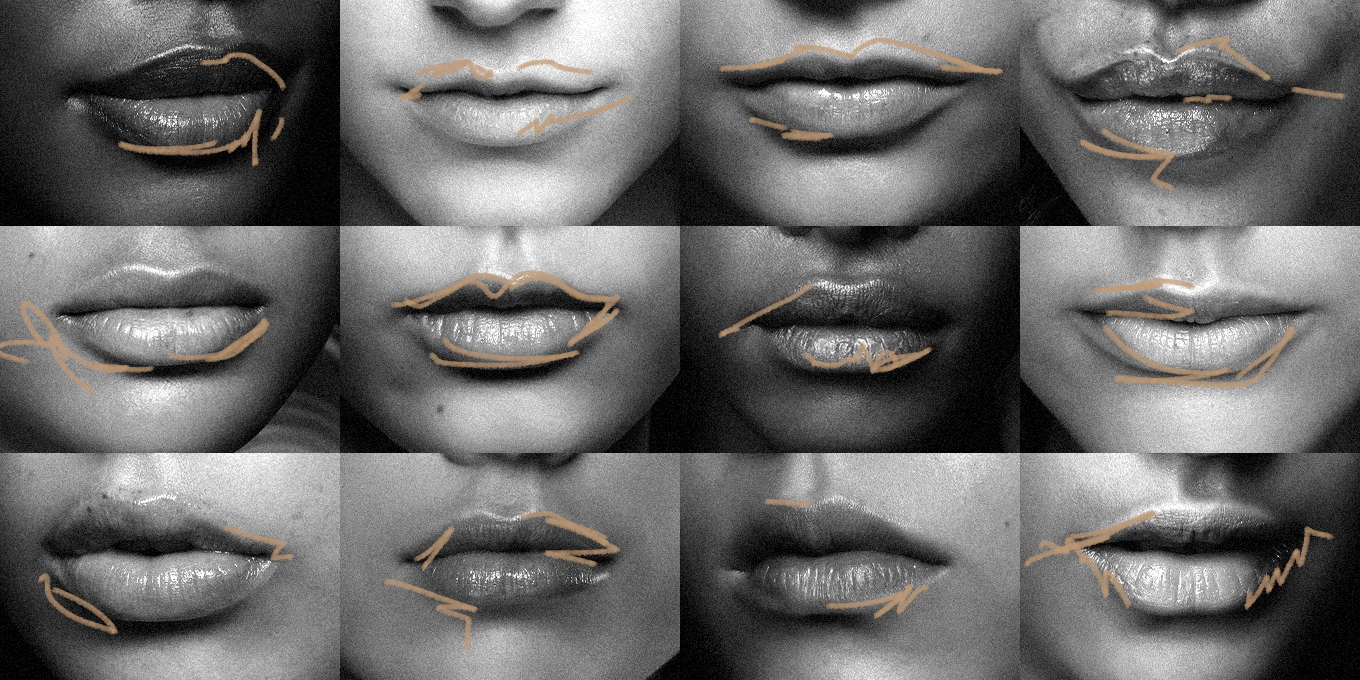Skincare
What Happens To Your Face When You Stop Getting Fillers?
Going cold turkey on fillers? Here's what to know.
by : Sarah Ratchford- Apr 23rd, 2020

When people make appointments with qualified medical practitioners to get fillers, there’s usually only one “after” they’re picturing: smoother, plumper skin. For the most part, this is what they get. But when patients sit down in Dr. Mike Roskies’ office for their first appointment, they’re presented with a long list of other, less desirable after-effects, too.
Roskies is a facial plastic and reconstructive surgeon and the medical director of SpaMedica in Toronto. In an ordinary, non-quarantined week, he sees about 25 to 100 patients for injectable fillers, and patients range in age from their teens to their eighties. Each patient gets “The Talk” about what to expect when they leave Roskies’ office. He says thanks to Instagram and other social channels, the taboo around getting these procedures has been lowered and the results overexposed to such a degree that people approach fillers a little too casually, without considering the aftereffects. “People need to treat this like a medical procedure with a medical risk; it’s not like going for a manicure,” he says.
While people used to wait until they saw visible signs of aging to act, many in their late twenties and early thirties are now hitting up doctors’ offices as a preventative measure. Roskies says most people want to enhance what they’ve already got instead of trying to build whole new features. For the most part, people are using hyaluronic acid fillers, the same component found in many topical skin care products designed for anti-aging and skin plumping.
There are, however, three categories of filler: permanent, semi-permanent, and non-permanent. The one you choose affects your outcome. Permanent fillers are made of silicone. Though silicone is safe for procedures like breast augmentation, Roskies says clients should steer clear of it for anything related to the face because anything that goes awry is not easily fixable. Semi-permanent fillers are made out of products like Sculptra, which stimulates collagen production in the injected area. While the filler itself doesn’t stay in your system, its effects last a lifetime. Hyaluronic acid, on the other hand, is non-permanent. Composed of a sugar molecule which is also produced naturally in the body, it generally dissolves and is excreted by the body in six to nine months. And if a client wants to get rid of it sooner, the area can be injected with an enzyme which will dissolve the filler completely within two hours.
“Aging won’t be accelerated once you stop using filler.”
Due to the low-maintenance factor of most fillers on the market, some of the worst fears people have about longterm use of filler are unfounded. Many of Roskies’ patients, for example, worry that they won’t be able to simply stop getting fillers. They’re afraid that, over time, their skin will sag after receiving filler and they’ll be tied to injections for life. Roskies says this isn’t a concern with hyaluronic acid fillers.
Another major worry people have is that they won’t be able to stop using fillers cold turkey because their signs of aging will be exacerbated. Roskies says it’s safe to get an injection and never have a followup appointment. “Aging won’t be accelerated once you stop using filler,” Roskies says. “But I joke with my patients that as soon as you leave my office, you’re going to start aging again. Gravity spends all of its time with you, and I spend 30 minutes with you.”
Dr. Patricia Wexler, celebrity dermatologist at Wexler Dermatology in New York, warns that there is such a thing as overdoing it with filler: in time, repeated injections can make the face look unnatural, which may not be the desired effect. That said, many people who are pleased with the results of their fillers opt to go for follow-up appointments once the acid dissolves and its effects wear off. Wexler says the time span between appointments will depend on the area of injection, the age of the client, and the state of their skin to begin with, among other factors. Generally, she says, younger people may find hyaluronic acid injections last about a year, while older folks may want to come for touch-ups every four to six months. Most of Roskies’ patients come back within six to nine.
“I joke with my patients that as soon as you leave my office, you’re going to start aging again. Gravity spends all of its time with you, and I spend 30 minutes with you.”
“As we get older we have less collagen support, less elasticity, so it’s not going to hold as long,” Wexler says. For those of us who can’t make our follow-ups for whatever reason – say, a global pandemic that prevents us from leaving the house – practicing good skincare in the interim can go a long way. Roskies says people’s skin routines should always be custom-created for them depending on skin type, sun exposure, age, and pollution contact, but he recommends using retinol, vitamin C, and sunblock for optimal care.
Wexler says there’s not a lot of mystery to fillers at this point, and doctors are aware of any risks that could crop up — with the exception, of course, of new products hitting the market.
Sidestepping unwanted side effects, in the meantime, takes research and finding the right practitioner. Both Wexler and Roskies say providers of these services should always warn patients of any aftereffects they might experience, beyond the desired ones. Both see people for follow-up appointments and provide advice for aftercare, as well as for any emergency care.
“You should always feel like there’s a safety net,” says Roskies. “It should never be that you see somebody in their basement for fillers, leave, and that’s it.”
Read more:
This Organic-Skincare Line Will Have You Glowing From Head to To
8 Products That Will Turn Your Next Bath Into a Spa Experience
Why Squalane Is a Triple Threat Skincare Ingredient You Don’t Want to Skip
Newsletter
Join our mailing list for the latest and biggest in fashion trends, beauty, culture and celebrity.
Read Next

Beauty
The Best Met Gala Beauty Looks Of All Time
From Taylor Swift's 'Bleachella' era to Rihanna's iconic 2011 braids, meet the best beauty moments in Met Gala history.
by : Katie Withington- Apr 26th, 2024

Culture
Benny Blanco Says He Fell in Love With Selena Gomez Without ‘Even Noticing’ It
Allow Benny Blanco to tell the straight-from-a-rom-com story of how he realized his feelings for his girlfriend and longtime friend.
by : Alyssa Bailey- Apr 26th, 2024

Beauty
Tested and Approved: Your New Hydrating Skincare BFF
This new product has all of your skin’s thirst-quenching needs covered.
by : ELLE Canada- Apr 17th, 2024




